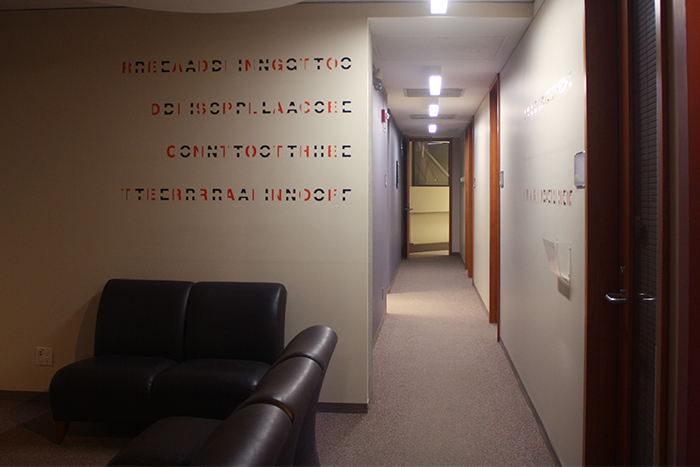In an article from 1973 in The Queen’s Journal, a few months before the opening of
Mackintosh-Corry Hall, a head of the user’s committee stated that a central theme for the
design of the complex was to facilitate “vertical and lateral communication.” A “student street” on the second floor promised “meeting” and “happening” places, including a stage in a large room.1
How do university walls accommodate the full potential of such “vertical and lateral
communication”? As people navigate the university campus, the line between personal
directions and the influence of the institution can easily become blurred. If, however, we focus on understanding place in aesthetic ways, can this trouble institutional paths, or create new ones? Theorist Gayatri Chakravorty Spivak has argued for rethinking higher education, specifically Humanities programmes in North America, as sites for the uncoercive re-arrangement of desires. She holds that the act of reading, in this context, takes a prominent role, not as the propagation of knowledge, but as the “displacement of belief onto the terrain of the imagination.”2
Post at Turning addresses how institutions prompt precise ways of navigating place, through which the eye is guided by, but not limited to, what the institution chooses to reveal or obscure. This project features texts inspired by Spivak’s An Aesthetic Education in the Era of Globalization (2013), at B176 Mackintosh-Corry Hall, and sporadically, across campus.
1 Peter Stokes, Secretary of the building’s Users Committee, quoted in Raj Anand, ‘The Queen’s Journal.’ Friday, January 12, 1973, 3.
2 Spivak, Gayatri Chakravorty. An Aesthetic Education in the Era of Globalization. Cambridge: Harvard University Press, 2013, 10.
Post at Turning
March-April 2017
Mackintosh-Corry Hall
Queen’s University at Kingston
Curated by Q4F












